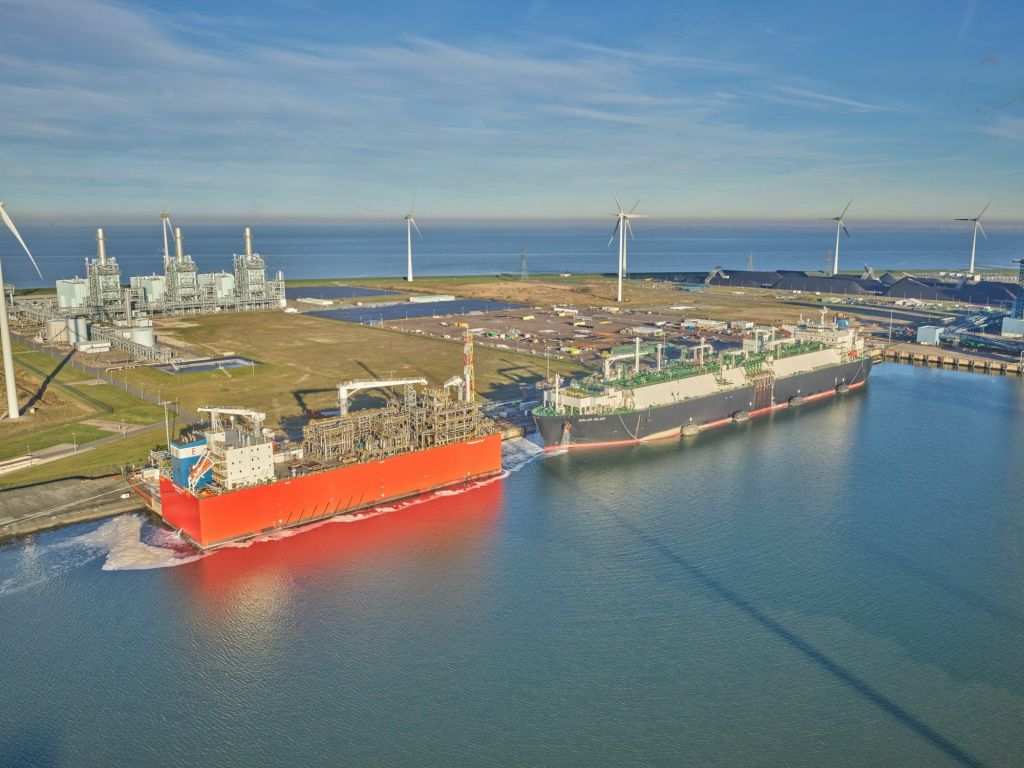Dutch gas transmission network operator Gasunie is working to further boost the regasification capacity in the European country besides the Gate LNG terminal in Rotterdam and the FSRU-based facility in Eemshaven.
Gasunie owns the Gate terminal along with Vopak. The facility, one of Europe’s main LNG hubs, received a permit in September to add the fourth tank and boost regasification capacity up to 20 Bcm per year. The terminal is currently capable to regasifiy about 16 Bcm per year.
Besides Gate, Gasunie also started delivering LNG from the new Eemshaven LNG hub with a capacity of 8 bcm in September. This facility features two chartered FSRUs, namely Exmar’s 26,000-cbm barge-based FSRU Eemshaven LNG and the 170,000-cbm Energos Igloo, owned by a joint venture of asset manager Apollo and US LNG firm NFE.
However, despite these additions the Dutch government is looking to further expand the capacity with one or more terminals.
Dutch climate and energy minister Rob Jetten said last week that the country was looking at ways to increase the country’s LNG import capacity further.
He told the House of Representatives, the lower house of the parliament of the Netherlands, that talks were ongoing with market parties interested in realizing more import terminals, as well as with regional authorities and the grid operators of the national and regional gas transport network.
Jetten plans to provide more details regarding the LNG capacity increase in the upcoming period.
“All options still open”
A Gasunie spokeswoman told LNG Prime late on Wednesday that the company is currently studiying various possibilities for the capacity increase.
“All options are still open, including at locations other than Rotterdam or Eemshaven,” the spokeswoman said.
She highlighted that a floating LNG terminal, such as the Eemshaven facility, is the quickest way to implement such projects.
The spokeswoman did not provide any additional information.
Besides in the Netherlands, Gasunie is also developing the planned onshore LNG import terminal in Brunsbuettel, Germany.
Earlier this year, Gasunie joined forces with the German government and RWE to build the Brunsbuettel LNG import terminal as part of the country’s plans to reduce reliance on Russian pipeline gas and boost energy security.
Two LNG supply deals related to this facility were announced this week, including the QatarEnergy and ConocoPhillips agreement as well as the Ineos and Sempra deal.

